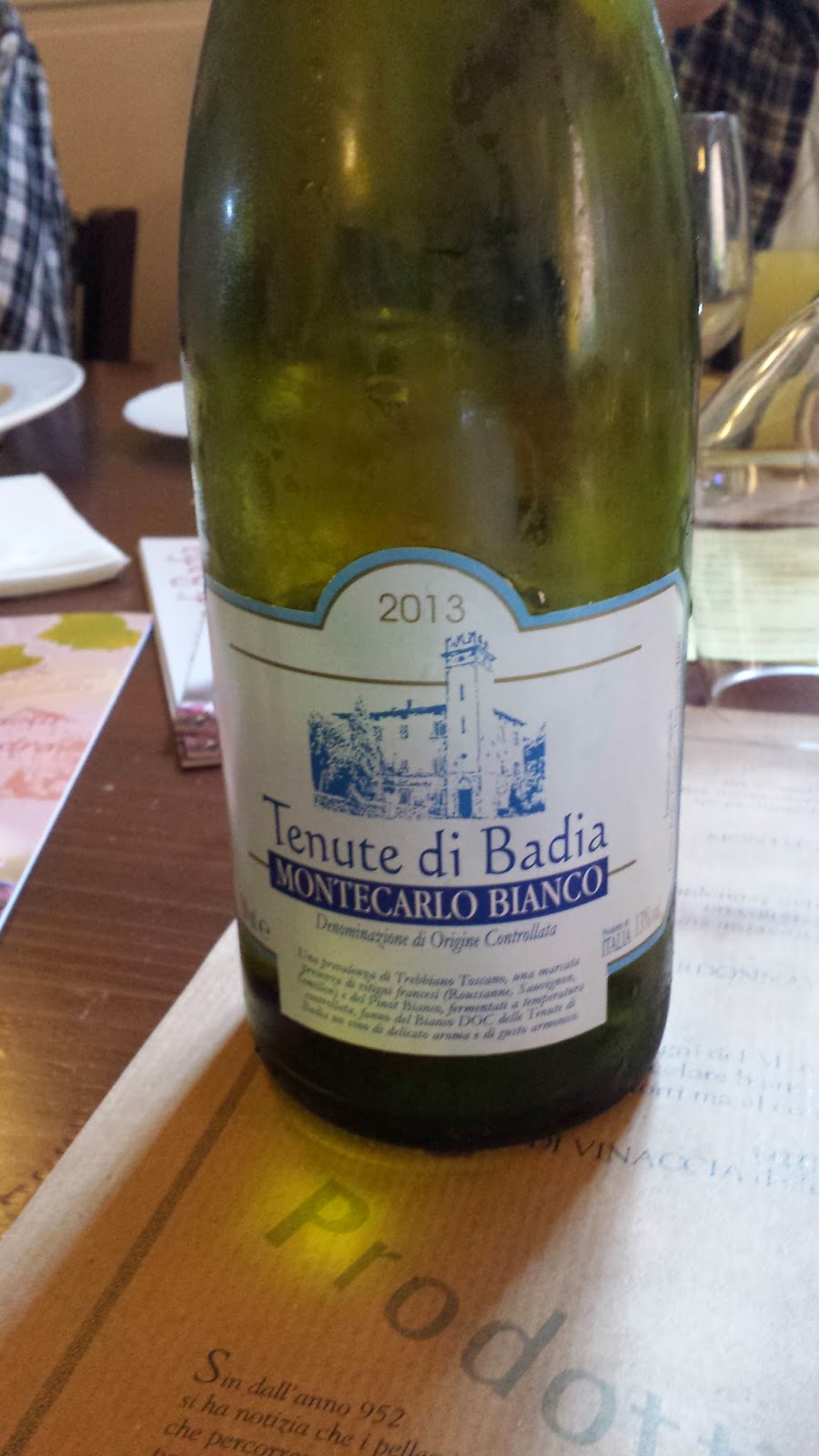First step- grow some grapes. The front rows seen here are Chardonnay grapes. The grapes are handpicked each year.
Not the engine from the Millenium Falcon, this is the grape crusher, the liquid from the crushed grapes gets piped over into the fermentation facility, the residue of the crushed grapes gets magically distilled into grappa.
OK now we are into some serious microbiology. These are 750 hectolitre fermentation vessels. Sort of puts the 30 litre fermentor in our department to shame. The crushed grapes ferment here for some period of time that I don't remember now because I drank too much wine.
To be offically classified as a DOCG (Denominazione di Origine Controllata e Garantita) wine, the alcohol content has to be carefully managed during fermentation. These fermentation vessels have an outer sheathe through which cold air circulates to keep the fermentation temperature from getting too high.
Lots and lots of fermentation vessels. After these, age in oak barrels for quite a while, and put into bottles (yay!)
And the end results-
Vivace "lively" is their sparkling wine (can't be called prosecco because it's not the right region). Goes down very easily.
Dry white-
Chardonnay- not as dry
Rosso- made from the exact same red grape as Chianti, but the winery is located 23 km away from the Chianti region, so it can't be called a Chianti.
Dessert wine (late harvest) and the Grappa. Some of the dessert wine mysteriously made it into my luggage for the trip home.










No comments:
Post a Comment